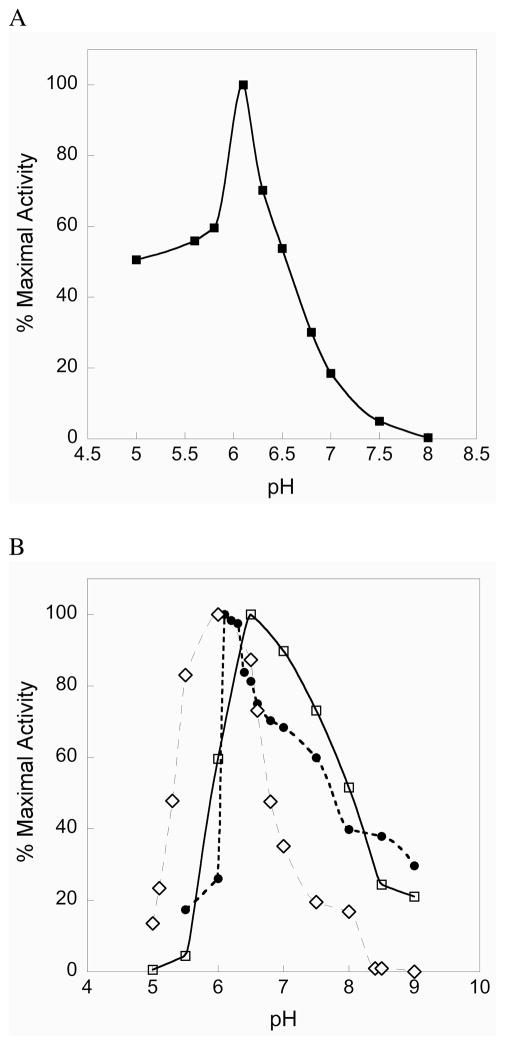Figure 2.
(A) Activity vs. pH profile for mTRΔ8. As can be seen, the truncated enzyme has a sharp pH optimum near 6 for the reduction of CH3SeO2−. (B) The N-terminal redox center has an acidic pH optimum for a number of different substrates: selenite (open diamonds), lipoic acid (closed circles), DTNB (open squares).

